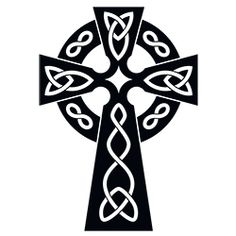
About St David
St David is the patron saint of Wales, whose saint’s day is celebrated annually on 1 March.
St David (or Dewi Sant in Welsh) was born on the south west coast of Wales, near the present-day city of St Davids. His family was aristocratic. He was educated at a monastery and became a missionary, travelling through Wales and to south west England and Brittany to spread Christianity. He is also supposed to have visited Rome and Jerusalem.
David founded a monastery where St Davids stands today. He died in 589 AD and was buried in the grounds of his own monastery. He has been the patron saint of Wales since the 12th century.
St David was at the heart of the Welsh church in the 6th century.
He had pedigree – a scion of an aristocratic family in West Wales, his mother became a saint (Saint Non); his teacher was also a saint, St Paulinus.
David was one of the early saints who helped to spread Christianity among the pagan Celtic tribes of Western Britain, founding a large monastery in West Wales; he became Archbishop of Wales, but remained in his community at Menevia (now called St Davids). His shrine became a great place of pilgrimage – four visits to the shrine at St David’s were considered the equivalent of two to Rome, and one to Jerusalem!
Most information about St David comes from a biography written by Rhygyfarch in the 11th century. Because it was written so long after the saint’s death, it isn’t likely to be very reliable. Furthermore, Rhygyfarch was a bit of a spin-doctor, and slanted his book to make the case for the Welsh church being independent of Canterbury. One writer describes Rhygyfarch’s book as “chiefly a tissue of inventions”. Nonetheless, David’s life is suffused with legends and miracles.
The most famous story about David tells how he was preaching to a huge crowd and the ground is said to have risen up, so that he was standing on a hill and everyone had a better chance of hearing him. One Welsh historian commented that, “One can scarcely conceive of any miracle more superfluous in that part of Wales than the creation of a new hill!”
David believed that monks should live simply, and he prescribed a harsh life for his followers. They were expected to remain silent, except for prayer or in emergency. As well as praying and celebrating Mass, the brothers had to work hard, rising at dawn for prayer, and then working in the monastery and the fields around it. David would not allow them to make animals work for them, but made them pull the plough themselves, saying, “Every man his own ox.” The monks endured a meagre diet, restricted to vegetables and bread, with milk and water to drink. St David himself drank only water and is sometimes known in Welsh as “Dewi Ddyfrwr” (David the water drinker). Though it was a hard life, David’s holiness and personal charisma were enough to hold the community together. The example of his life, and the modernity of his most famous saying (from his last sermon) – that we should concentrate on “doing the little things in God’s presence with conscientiousness and devotion” – make St David a figure with a contemporary appeal.
Former Archbishop Dr Rowan Williams thinks that phrase resonates with modern people because “…it reminds us that the primary things for us are the relationships around us, the need to work at what’s under our hands, what’s within our reach. We can transform our domestic, our family relationships, our national life to some extent, if we do that with focus and concentration in the presence of God.”
References :

